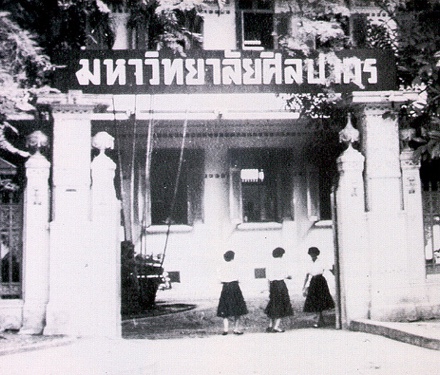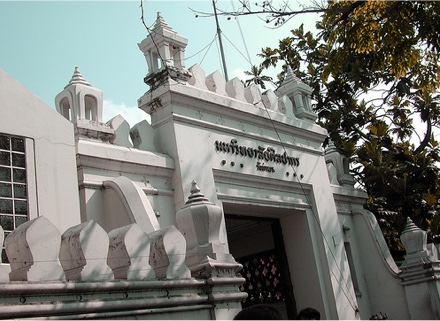ประวัติ / ปรัชญา / วิสัยทัศน์
When the School of Arts, SILPAKORN, has been upgraded as a university in 1943, the School offered only one faculty, Painting and Sculpture, the decorative interior was contained as a program. Some graduated students chose an interior career and became moderately successful. At that time, Thai society needs more interior designers.
Professor Sila Perasri, dean of faculty of Painting and Sculpture, at that period, deliberated with HRH prince professor Yajai Jittrapong, Associated professor Poonsawat Kritdakorn, and HRH prince Chalermsamai Kritdakorn, who were Officials in the Department of Fine Arts and co-professors in decorative art.
They established a curriculum and project of decorative Art Faculty, which was the fourth one of SILPAKORN University in 1956. Professor Sila Pirasri took a post of dean.
“Art is Long
Life us Short”
Professor Sila Perasri
During the period of 1956-1973
The faculty of decorative arts managed only one branch, called decorative art. It was separated in 3 levels: diploma (3 years), bachelor degree (4 years). The graduated will be recorded as “Diploma of Art (Decorative Art)” and Bachelor of Art (Decorative Arts)”.


At present,
the faculty of Decorative Arts has opened for 7 branches of bachelor degree: interior Design, Visual Communication Design, Product Design, Applied Art Studies, Ceramics, Jewelry Design and Fashion Design. Three branches in Master Degree: Master of Design Arts, Master of Product Design and Master of Jewelry Design.
In 2015, the faculty will open more for Master of Creative Business Management and Master of Multidisciplinary Study in Innovative Design and Management for Hotel and Real Estate and Ph.D.in Design Arts (international program) which has been organised at SILPAKORN University Wang Thapra campus, Bangkok and Sanamchan campus, Nakornprathom
Throughout the years, the faculty of Decorative Arts procreated continuously the qualified graduate for serving the society, covers all initiative branches, based on good knowledge, good attitude, creative thinking, good virtue, for creating good society.